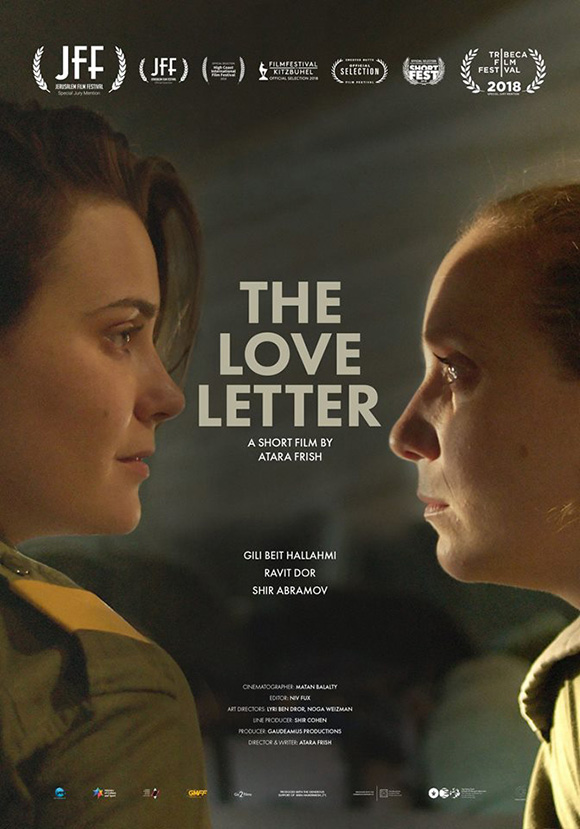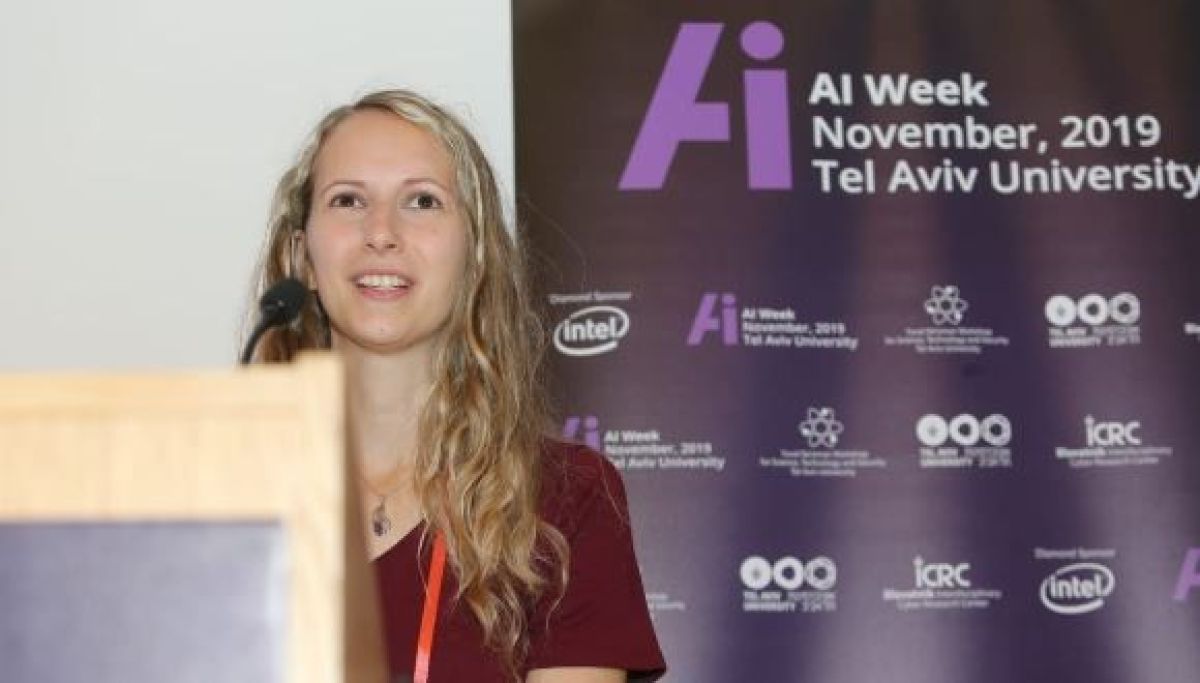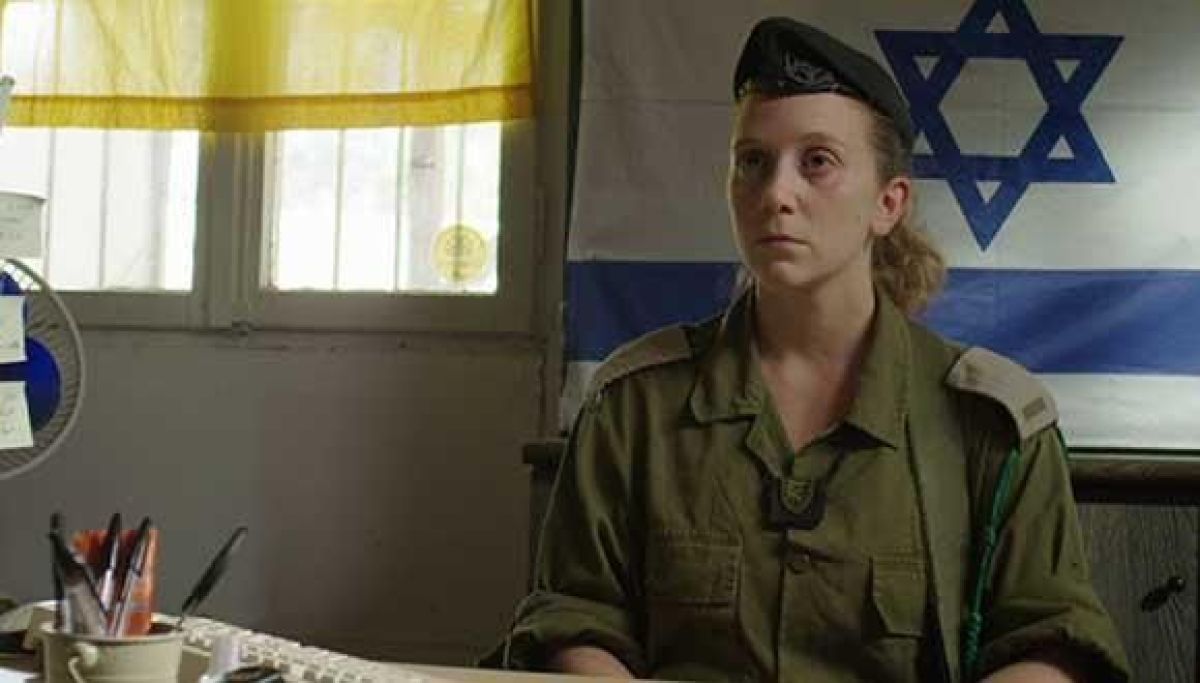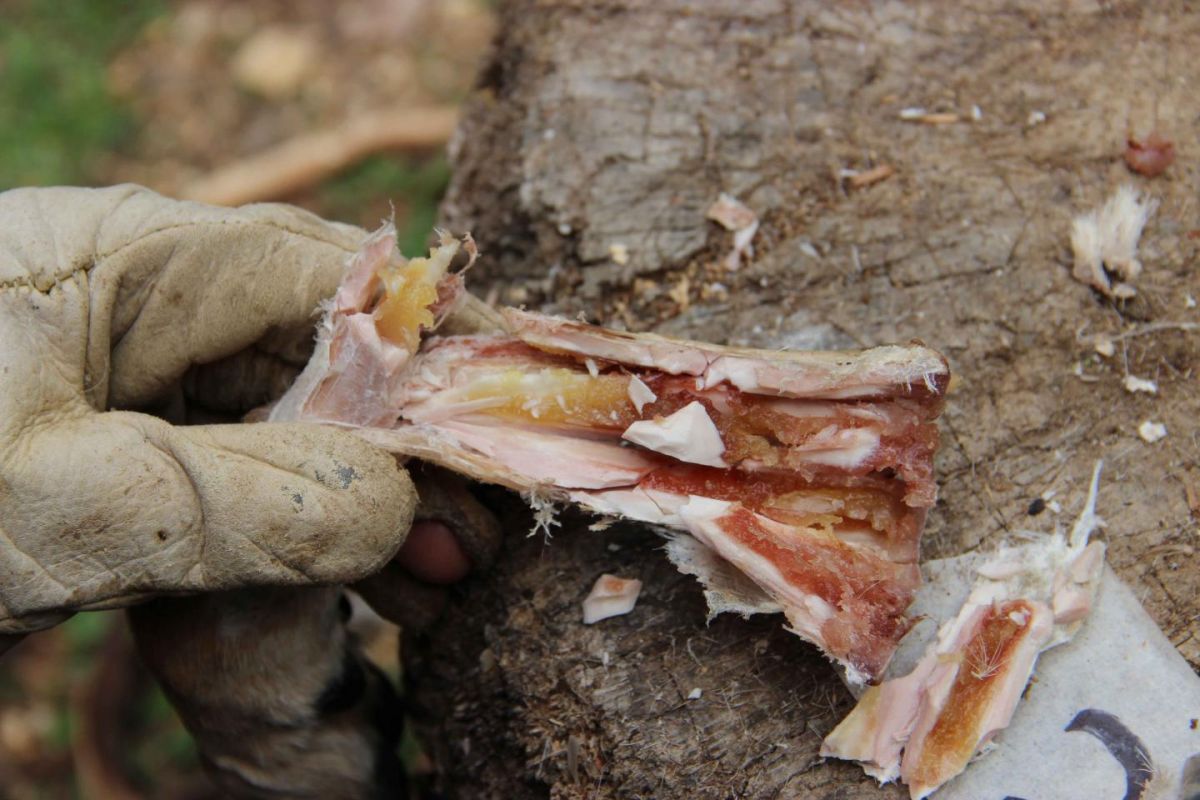TAU makes schizophrenia diagnosis easier with AI
TAU Computer Science master’s student Vered Zilberstein applies machine learning to identify schizophrenics
Tel Aviv University student, Vered Zilberstein, pursuing an MSc in Computer Science at the Blavatnik School of Computer Science, has co-led a study that will help detect schizophrenia patients using artificial intelligence.
She and her research partners applied a machine learning algorithm that identified which study participants were afflicted by schizophrenia and which were not.
“We used participant scores in a language experiment to train a machine learning classifier to differentiate between schizophrenia patients and a control group of the same sex and age. It managed to do it at an 81.5% accuracy rate,” says Zilberstein, “This procedure is done through a sub-area called natural language processing.”
Collaborating with Beer Yaacov Mental Health Center, Zilberstein set out to explore how AI and computing can assist in the world of mental health – specifically in dealing with schizophrenia.
The disorder is very tricky to diagnose and is characterized by abnormal behavior, speech impairments and a diminished ability to understand reality.
Examples of thought and language disorders characterizing people with schizophrenia include jumping between unrelated issues, called “derailment,” while engaging in conversation. “Tangentiality” occurs when a sufferer replies to a question in an oblique and irrelevant manner. Grammatical mistakes and incoherent, illogical speech are also among the symptoms.
“However,” says Zilberstein, “you need to be very skilled to succeed in identifying speech difficulties affecting schizophrenia sufferers as well as those affecting other groups, such as people on the autistic spectrum.”
Zilberstein’s study included two experiments which examined two types of thought disorders. One focused on derailment, which is dissociative weakness. “It means that one is jumping from one subject to another during a conversation,” explains Zilberstein, “for example, someone can say: ‘I’ve always liked geography. My last teacher in that subject was Prof. August A. He was a man with black eyes. I also like black eyes. There are blue and grey eyes and other sorts too…’ and so on. You can clearly see that they jump very quickly between subjects and by the end of the sentence they have completely derailed from the initial topic, which was geography.”
The other experiment focused on incoherence caused by peculiar vocabulary and incorrect grammar. It is hard to understand what is meant. For example: “Oh, it was superb, you know, the trains broke, and the pond fell in the front doorway.”
Both experiments utilized interviews, questionnaires and photo descriptions. They involved 24 male patients affected by schizophrenia aged 30-40 and 27 mentally healthy males, serving as a control group.
The test results showed that, predictably, the control group tended to maintain focus on the conversation topics whereas the patients were more inclined to changing the subject. More important, it was the machine learning algorithm that could analyze and identify who was whom.
As a computer science master’s student, who comes from the world of exact sciences, what draws you to the world of mental health?
“I wanted to be involved in a combination of disciplines, and not only computer science. I wanted to write a thesis based on real data.”
How widespread, if at all, is the intertwining of artificial intelligence and mental health?
“While artificial intelligence gathers pace in the academic, industrial, educational and social media worlds, combining computer science and mental health is still very much in its infancy. However, artificial intelligence is inevitably going to affect almost all aspects of our lives.
“My study examined the way patients and healthy people talk but further studies may explore and compare between the way patients and healthy people write, for example on social media, which is what I intend on looking into in my research going forward.”
New Pulsed Electric Field Technology Could Allow for Less Invasive Tumor Molecular Profiling
TAU hosts first ever AI Week
Over 3,000 people are expected to attend the event, which begins this Sunday, November 17th
For the first time ever, Tel Aviv University will be hosting AI Week – an international forum for discussing the hottest topics in artificial intelligence. The event will take place from November 17th to the 21st and bring together technology experts, industry leaders, business executives, government representatives and a variety of other sectors. AI Week will be comprised of two main conference days with keynote speakers, ten tracks covering key topics in the field, as well as an innovation exhibition led by the Israel Airport Authority and satellite events. In addition, the event will include workshops, led by some of the top experts on artificial intelligence. The week will conclude with a hackathon focusing on utilizing AI for social good: healthcare, education, preserving the environment, and more. The purpose of AI Week is to discuss diverse topics related to or making use of artificial intelligence, including medicine, transportation, computer innovation, startups and social issues. Alongside the lectures, there will be an exhibition of research posters and a presentation of the leading companies in the field. The keynote speakers will include Prof. Amnon Shashua, President and CEO of Mobileye; Prof. Isaac Ben-Israel, Director of the Blavatnik Interdisciplinary Cyber Research Center; Aharon Aharon, CEO of the Israel Innovation Authority; Dr. Kira Radinsky, CTO and Chairman of Diagnostic Robotics Technologies; Dr. Ben Lorica, Chief Data Scientist at O’Reilly Media and more.Study shows Europeans migrated to the Levant 40,000 years ago
Teeth stand the test of time
“Unlike bones, teeth are preserved well because they’re made of enamel, the substance in the human body most resistant to the effects of time,” Dr. Sarig explains. “The structure, shape, and topography or surface bumps of the teeth provided important genetic information. We were able to use the external and internal shape of the teeth found in the cave to associate them with typical hominin groups: Neanderthal and Homo sapiens.” The researchers performed in-depth lab tests using micro-CT scans and 3D analyses on four of the teeth. The results surprised the researchers: Two teeth showed a typical morphology for Homo sapiens; one tooth showed features characteristic of Neanderthals; the last tooth showed a combination of Neanderthal and Homo sapiens features. This combination of Neanderthal and modern human features has, to date, been found only in European populations from the early Paleolithic period, suggesting their common origin.A first-of-its-kind discovery
“Following the migration of European populations into this region, a new culture existed in the Levant for a short time, approximately 2,000-3,000 years. It then disappeared for no apparent reason,” adds Dr. Sarig. “Now we know something about their makeup.” “Until now, we hadn’t found any human remains with valid dating from this period in Israel,” adds Prof. Israel Hershkovitz, head of the Dan David Center, “so the group remains a mystery. This groundbreaking study contributes to the story of the population responsible for some of the world’s most important cultural contributions.”Food for thought
Solving the climate crisis may start with what’s on your plate
By 2023, 8 billion people are expected to be living on Earth, and we’ll all be facing a serious challenge: how to feed everyone. We spoke with some of the experts at Tel Aviv University about how our choice of what to put on our plates can affect the rainforests on the other end of the globe.
Humanity in crisis
The idea of food security is that every person has the right to receive and obtain enough food to sustain them in good health over time. But even today, our planet is already struggling to keep up with demand, and we keep hearing reports of damage and depletion of basic resources like fresh water, usable territory, and energy. So how will we feed 9 billion people, a decade from now? “The food security crisis is considered a global problem,” explains Prof. Nir Ohad, head of the Manna Center for Food Safety and Security at Tel Aviv University. “In many parts of the world, the three basic conditions for food security do not exist: availability, production and accessibility. We’ve also had periods of austerity in Israel, where store shelves were empty and products were rationed. Today, thankfully, the situation is different, but take a country like Venezuela, which is rich in resources, but today is facing an economic collapse and suffering from severe problems related to food.”
What causes a crisis of this magnitude? According to Dr. Hagit Ulanovsky, from the Porter School of Environmental Studies, an expert on environmental and health risk management and one of the founders of the Israeli Forum for Sustainable Nutrition, there are many reasons: “Efficient agriculture requires environmental resources: soil, water, sunlight, fertilizer and more. But it doesn’t end there. The food production process doesn’t stop there, there’s also transporting the food and marketing it, which requires many additional resources. All of this adversely affects the environment: destroying the rainforests, soil erosion, pollution of the environment with excess fertilizers and pesticides, using up a lot of water, and greenhouse gas emissions in significant quantities, just like the industrial, transport or energy sectors.”
Recently, the headlines were dominated by huge fires in the Amazon rainforests, considered the “green lung of the Earth,” caused largely by the world’s growing demand for meat. Extensive forest areas were destroyed to make room for cattle. “The environmental cost of raising animals for food is huge,” explains Dr. Ulanovsky. What’s even more sad is that it’s not worthwhile. The high environmental cost is due to low ‘conversion efficiency’. For example: for every 100 calories the chicken eats, we will get about 15 calories in the egg it lays. For every 100 calories a cow eats, we only get about 3 calories! Where did the rest of the energy go? To sustain the life processes of a cow: breathing, digestion, movement, etc. Conversely, if we grow on the same soil and with the same amount of water food that is suitable for humans instead of animal feed – then we can eat 100 calories of that food and… actually get 100 calories.”

Stop now, before it runs out. The process of burning rainforest for the benefit of raising cattle.
Dr. Ulanovsky continues: “In light of increasing climate change, and in response to the worsening environmental pollution worldwide and especially in Israel, concerns about food insecurity are rising not only at the individual level, but also at the national level: extreme weather events will damage agricultural produce, soil and water. Pollution will seep into the vegetables we eat, new plant diseases will attack the fields and orchards. Disaster on the other side of the world will greatly affect our food security here, because most of the food we eat is imported from overseas, and therefore a reduction in production in Argentina or Ukraine will not only raise prices but may prevent food exports to Israel,” she concludes.
This is how the vicious cycle works: meat consumption in Israel is driving demand, which is accelerating the process of growing and production in distant countries like Argentina and Australia, and the environmental cost of the meat industry is rising. So how do we get out of the loop? One of the solutions offered by Prof. Ohad and Dr. Ulanovsky in their courses at Tel Aviv University is a shift to a sustainable diet.

There’s not enough for everyone. Empty food bowls in areas in a country in crisis.
The solution: less meat
The first thing people can do is make smart dietary choices. “Each of us has the ability to make a positive impact on the Israeli and even the global food system,” explains Dr. Ulanovsky. “We need to do all we can to preserve environmental resources, to enable continued healthy food production. This is especially important in the dense and small state of Israel, where the birth rate is particularly high. Israel is recognized worldwide as the startup nation, but not everyone knows that it is also the world leader in the most up-to-date nutrition guidelines, both health-wise and environmentally.”
Dr. Ulanovsky’s recommendation is to start with a simple step – to choose what to put in the kitchen and the dish you’re making. “This choice has a lot of power and the ability to make a difference. The new nutrition guidelines issued by the Ministry of Health in Israel include health considerations, and also present the environmental aspects of our dietary choices,” she says.
It turns out that health and environmental protection are overlapping concerns when it comes to culinary choices. “There are different approaches to determining a healthy diet, and the most well-tailored for our region is the Mediterranean diet, recommended by the Ministry of Health, where you eat lots of fruits and vegetables and add dairy and meat products in a balanced way,” Prof. Ohad says. “Vegetarian and vegan diets, which maintain the same nutritional balance of meat, dairy and egg substitutes, also help maintain a healthy lifestyle, sustainable agriculture and the environment. These diets are taking up ever-increasing space, which is a good thing.”

A healthy diet that also helps the environment – a diet rich in vegetables, fruits and legumes
“Veganism is the best diet for the environment, and it is suitable and healthy for most people, although it is recommended to get professional nutritional advice in the process of transitioning to it,” Dr. Ulanovsky explains, adding, “However, many people find it difficult to give up animal products, and not everyone can make the change. But if each of us starts small and makes a gradual change, together we can make a difference to our planet.”
TAU grad’s short film sold to HBO
Atara Frish’s “The Love Letter”, produced at the Steve Tisch School of Film and Television, was purchased for broadcast by HBO Europe.
“The Love Letter” is a 19-minute-long film that deals with a complex relationship between two female soldiers in the Israel Defense Forces, a novice soldier and her direct superior. The relationship between the two ranges from romantic attraction to standard military bureaucracy. Noa (Gili Beit Hallahmi), a dedicated commander of new recruits in the IDF, receives a mysterious love letter from one of her female underlings. Suspecting that the letter is fake, she’s forced to choose between adhering to strict military protocol and giving in to her desire to feel loved, if only for a moment.
The film had its world premiere at the Tribeca Festival’s Short Film Competition, where it received special notice in the “Student Vision” category. The film also won the top prize at the Jerusalem Festival’s Short Film Competition, and was screened at Palm Springs Festival in the U.S. and many other international film festivals around the world.
“The Love Letter” was produced as part of the “Heroine” project, where five female directors created a short film each, which was then combined into one full-length feature. The project was produced at the Steve Tisch School of Film and Television, under the artistic direction of Michal Winnick and Mia Dreyfus, and produced by Efrat Cohen (Gaudamus Productions), and screened around the world.
Atara Frish is currently working on a TV series based on “The Love Letter”, as well as writing a full-length script for a feature film.











